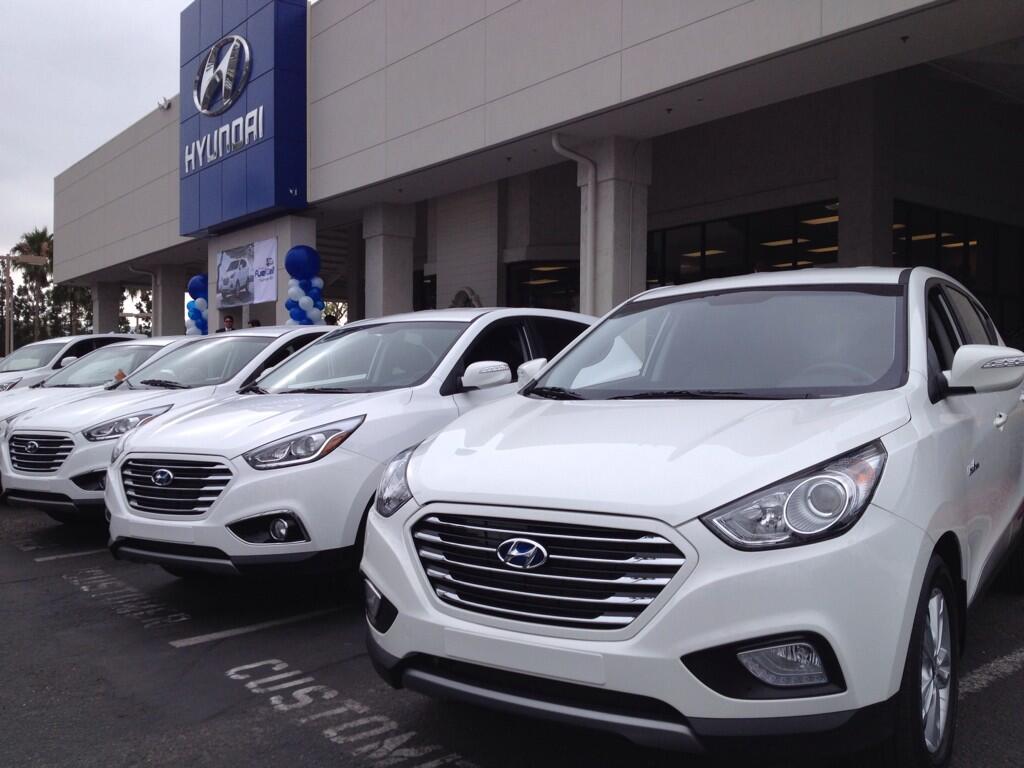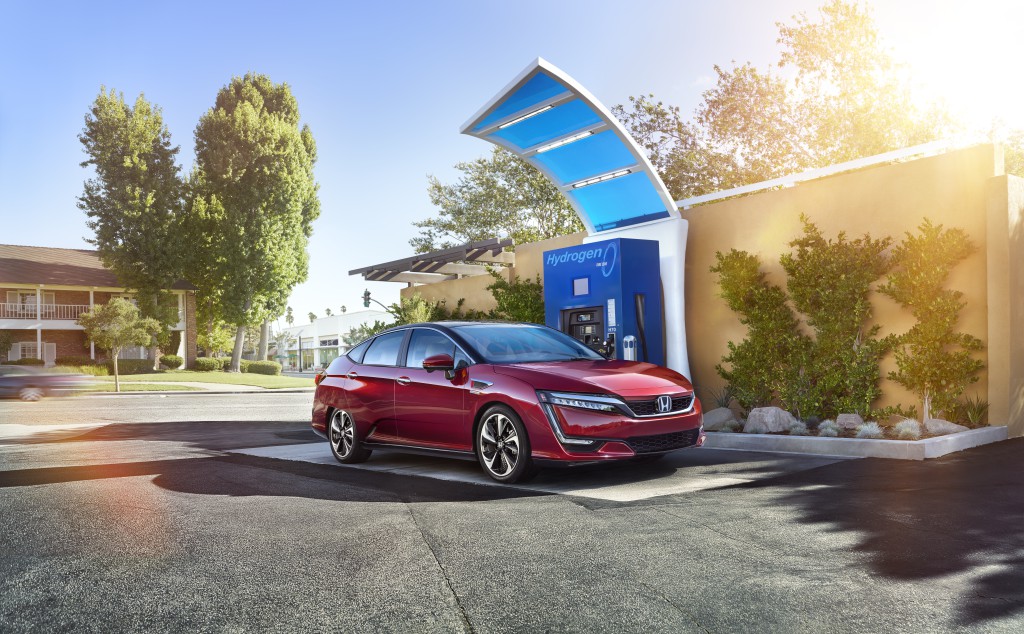There's nothing like a bet to make things interesting.
The arrival of hydrogen fuel-cell cars has been anticipated for decades now, leading to many predictions of both failure and success for hydrogen.
In 2007, hydrogen critic Joseph Romm, believing that fuel-cell vehicles would never become mainstream, made a bet with hydrogen advocate Greg Blencoe.
DON'T MISS: 2017 Honda Clarity Fuel Cell to lease for $369 a month
Blencoe would win the hydrogen bet if fuel-cell vehicles reached 1 percent of U.S. new-car and light truck sales in 2015 or any year before—as detailed in a 2009 article in The New York Times (registration required).
That didn't happen, and Blencoe settled the bet last year, even before the latest crop of long-distance battery-electric cars hit the market.
As the loser, Blencoe mailed Romm a $1,000 check, and was photographed wearing a t-shirt that read "Joseph Romm was right about hydrogen."

First 2015 Hyundai Tucson Fuel Cell delivered to lessee at Tustin Hyundai, June 2014
The bet illustrates the challenges facing fuel-cell cars, which so far haven't come anywhere near to 1 percent of new-car sales in any country.
Battery-electric cars are closer to that mark, but only after years of sustained sales growth, backed by a broad array of incentives in countries, states, and localities around the world.
In contrast, fuel-cell vehicles have only been available to the U.S. public in more than handfuls since 2014, when the first Hyundai Tucson Fuel Cell was delivered in selected areas of California.
MORE: Battery-electric cars cheaper, better at cutting emissions than fuel cells: Stanford study
The Tucson Fuel Cell was joined by the Toyota Mirai in November 2015, and Honda plans to begin delivering the first 2017 Clarity Fuel Cell cars in California before this year is out.
All three automakers plan to limit sales to specific regions of California deemed to have sufficient hydrogen fueling infrastructure.
Of the 50 hydrogen fueling stations that were to have been open in California by the end of this year, the real number will be "more like 30," Toyota admitted earlier this year.

2017 Toyota Mirai
In comparison, electric-car charging stations of various types are not only cheaper, but also a known quantity. Most hydrogen fueling stations are a new experience for the municipality in which they're installed.
One of the main stated benefits of fuel-cell cars—long range—is also slowly being eroded by battery-electric cars.
The Toyota Mirai was the first zero-emission vehicle to break the 300-mile barrier, but now the Tesla Model S has surpassed that mark as well.
At 238 miles of range, the 2017 Chevrolet Bolt EV is also fairly close to the 265-mile estimated range of the Hyundai Tucson Fuel Cell.

2017 Honda Clarity Fuel Cell
Not all carmakers share the lofty ambitions of hydrogen fuel-cell advocates either.
When it announced the Mirai, Toyota said it only expected to deliver 3,000 units in the U.S. by the end of 2017. Honda has even more modest goals for the Clarity Fuel Cell.
While it may be far too early to write off fuel-cell cars, they still have a long way to go before achieving adoption rates similar even to those of battery-electric cars.
[hat tip: Doug King]
_______________________________________________












